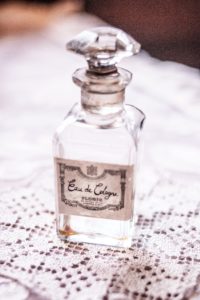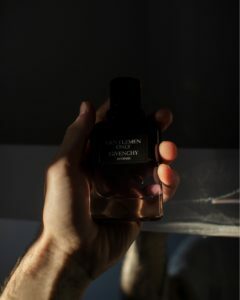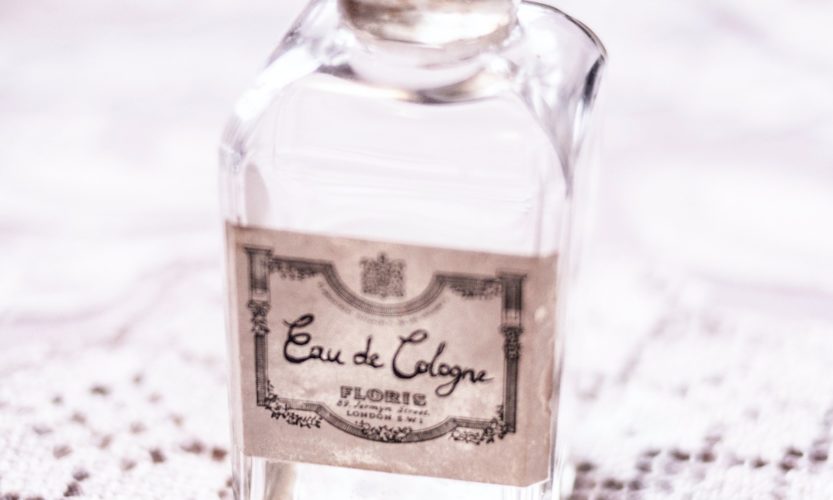By Bryan Ergle
Did you grow up understanding that cologne was for men, and perfume, for women? That inherently, perfume was something feminine, and no masculine man would buy it – unless it was as a gift – much less wear it? Then you’re in the majority. I myself grew up with this impression, but, in truth, we were all mislead. Worse, as men, we were actually being insulted! As connoisseurs, we are better than this, and we must endeavor to get past the staid concepts of any fragrance a man wears being called ‘co logne!’
logne!’
To begin, we need to understand what makes up a fragrance. There are two basic ingredients – perfume oil, the raw, thick, heavy scented ingredients that give a fragrance its scent, and alcohol, which acts as a stabilizing agent, preventing the oils from souring, reducing the concentration to the point that is won’t irritate skin, and thinning it to the point that it can be easily applied by vaporizer.
Next, we need to understand that cologne and perfume are actually terms with specific meanings… or at least, somewhat specific, as you’ll come to see shortly. These terms are not only the names in common use for the types of fragrances, but actually refer to concentration of oil in a fragrance. Whether for good or ill, the perfume industry is self-regulating with regard to these naming conventions (we’ll get to the train wreck that is IFRA regulations later!), so there isn’t a hard rule on the percentages of oil contained, but a rough breakdown would be this:
- Extrait de Parfum (also called pure parfum, or perfume extract): 20-35%
- Perfume: 15-30%
- Esprit de Parfum (ESdP): 15-25% (a fairly unusual concentration moniker, not commonly in use)
- Eau de Parfum (EDP): 8-15%
- Voile de Parfum* (VDP): 8-15%
- Eau de Toilette (EDT): 4-8%
- Cologne (also called Eau de Cologne, or EDC): 2-5%
- Eau Fraîche (Lotion, body spray, body cream, et al): 3-4%
- Aftershave: 2-4%
- Soap: 2-4%
*Voile de Parfum, it is worth noting, is generally considered to be an equivalent to Eau de Parfum; the primary difference is that it uses Isopropyl Myristate, or IPM, as the stabilizing agent, rather than alcohol. As IPM has a much higher flashpoint than alcohol, this, essentially, a non-flammable version of an EDP. This has advantages with regard to shipping, and was indeed why VPM was created, as most alcohol-based perfumes are considered hazardous goods, and subject to rather strict regulations, particularly when shipping internationally. Voile de Parfums, as a result of using IPM rather than alcohol, also generally tend to come across as ‘lighter’ and wear ‘closer to the skin’, meaning that they don’t project as well as their EDP counterparts. They are also subject to freezing in cold weather or during cold transport conditions, though that would not impact the scent.
As you can see, cologne sits terribly low on the list of concentrations, potentially even lower than some lotions! So how did this come to pass? There are many theories, but one that holds credence is that there was some crossover in the market between aftershave and cologne. If you look at their percentages, they match closely, so it would make sense that gentlemen simple started wearing aftershave as their fragrance, and companies took advantage of this. Originally, though, colognes were fragrances of a very specific type, a lower-concentration, citrus floral scent, named after its creator’s newly-adopted hometown of Cologne, Germany.
A further extension of what happened that has merit is the idea is that, during a boom in the perfume industry in the 1970’s, men wanted/needed a fragrance, but that also needed to be marketed as something distinct from the feminine scents the women were wearing, and the ‘cologne’ moniker was simply adopted, which coincides with the aftershave theory. However the mix-up began, we are left with the after effects today, where many men refer to any fragrance they wear as ‘cologne’.

I admit, I was terrible about doing this myself, and still today fall prey to the ‘cologne equals men’ phrasing, but being a knowledgeable person in the fragrance field means you ought to say cologne, only if you are referring to a cologne concentration. While there are some fragrances that are designed to be masculine or feminine – typically ‘pour homme’ and ‘pour femme’, respectively – I would heartily encourage you, especially with regard to niche fragrances, to consider all scents to be unisex, until you yourself decide otherwise. It can be all too easy to fall into the trap of reading reviews and making judgements, and indeed, many sites even have voting on whether a scent leans male, female, or unisex. Again, judge for yourself!
Getting back to basics for a moment: concentration, for those of you who are not already fragrance fanatics, of ‘fragheads’, as they’re often called, you may be wondering what the big deal is? Why is having a higher concentration important? Generally speaking, the higher a concentration, the longer a fragrance will last. Note, that’s generally speaking – one EDP may last longer than another extrait. It depends on the manufacturer, the ingredients, and myriad of other factors. All of this, of course, on top of the fact that scent is extremely subjective.
There is also, on some perfumes, a ‘percentage by volume’ or just ‘volume’ listed. The opposite of the oil concentration, this is the percentage of stabilizing alcohol in the perfume; and to show you the variation, I have, sitting in front of me, three different bottles, from different brands, right now: two EDP, one with 78% volume, and one with 77% volume, and a Pure Parfum, with 75% volume. As you can see, each of these percentages could all fall within ESdP, perfume, or even extrait concentrations, it just varies that much.
It’s important to know the basics, because while there is a science and methodology behind all of this, it varies so much from one manufacturer to the next that is can’t possibly be absolute. The point is to understand it well enough to go in with a good baseline of knowledge, so you can narrow down the overwhelming field of choices, speak learnedly about what you are looking for or want to know, and make a well-informed – well sewn – decision.



